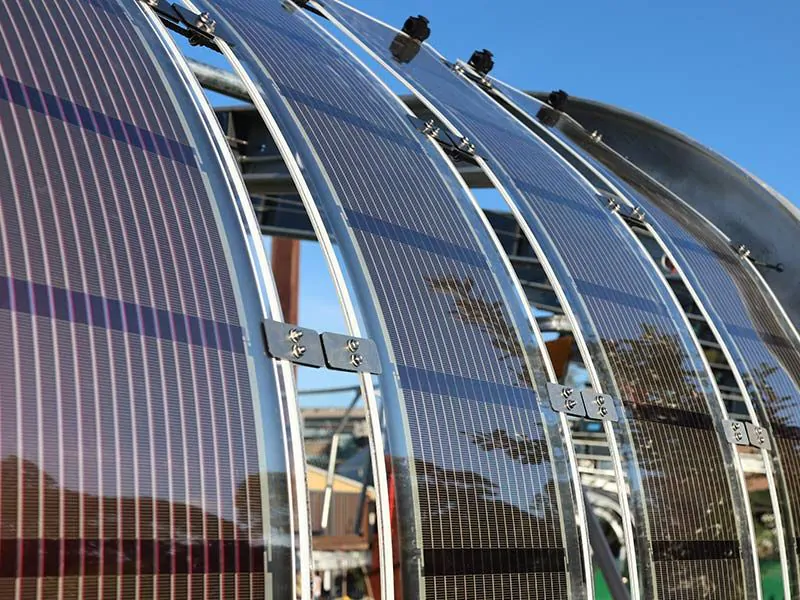A truly suggestive demonstration for a product that could become mass in the future: printed solar cells.
Newcastle University's renewable energy technology is ultra-light, ultra-flexible, recyclable and cheap to produce. Printed solar panels will power street lighting in Sydney. 3D printing? Nì: the material is produced with conventional printers.

Professor Paul Dastoor, physicist of the Faculty of Science is the creator of the printed solar panels. He is obviously excited to publicly present the discovery made, which marks an important step towards a wide commercial availability of solar.
“This installation,” says Dastoor, “is the next critical step in accelerating the development and commercialization of this technology. It offers a new scenario to test the performance and durability of these new panels.”
The presentation
The director of the University's Newcastle Institute for Energy and Resources (NIER), Professor Alan Broadfoot, states that the University is committed to bringing the world closer to a sustainable future through these next-generation technologies. “The printed solar panels celebrate the transformative research coming from our labs. What is needed now are valuable partnerships with government, industry and the community.”
Printed solar panels, a new manufacturing industry
The first major manufacturing target for this new technology is a printed solar panel plant in New South Wales. A world-class manufacturing facility is already operational at the University's Newcastle Institute for Energy and Resources (NIER). This printing facility can produce hundreds of meters of material per day.
This technology will truly disrupt and revitalize the contract printing industry. Printed solar is produced with conventional printers: for example, the system used for testing was a system that previously printed wine labels.
An important plan for the conversion of the printing plants, combined with adequate staff training, could requalify a completely new workforce.
The solar panels printed
Compared to the energy technologies already widespread, this material has almost surreal qualities: it is extremely light, hyper-flexible and incredibly thin.
Suitably reinforced by a polycarbonate coating, the printed solar panels generate energy during the day, which is stored on battery to power (in this test system) a dazzling interactive display at night.

Main advantages
Printed solar is cheap to produce. It has a production cost of less than $ 10 per square meter. It is quick to produce: the printing equipment already widespread on a commercial scale would be able to produce kilometers of material per day.
“No other renewal energy technology can be produced so quickly,” says Professor Dastoor. And he's right. The low cost and speed with which this technology can be implemented is exciting and would allow for rapid deployment.
Over 99% of the panels are made of PET. A material that can be recycled, a clear advantage over traditional silicon panels.
“We are currently investigating recycling processes for this material. Our hope is that we can separate the outer layers of PET and reuse them to create new panels with minimal processing,” said Professor Dastoor.
The possible applications of printed solar panels
Energy systems to be used in rescue scenarios. Charging systems for electric vehicles, caravans, military vehicles. Floating covers for swimming pools, or even dam basins. Sails for boats. Smart curtains for skyscrapers or individual buildings. Greenhouse covers and the more you have, the more you put.
Imagine a world where everyone has access to electricity, and where every surface can generate solar power clean, low cost and sustainable.


